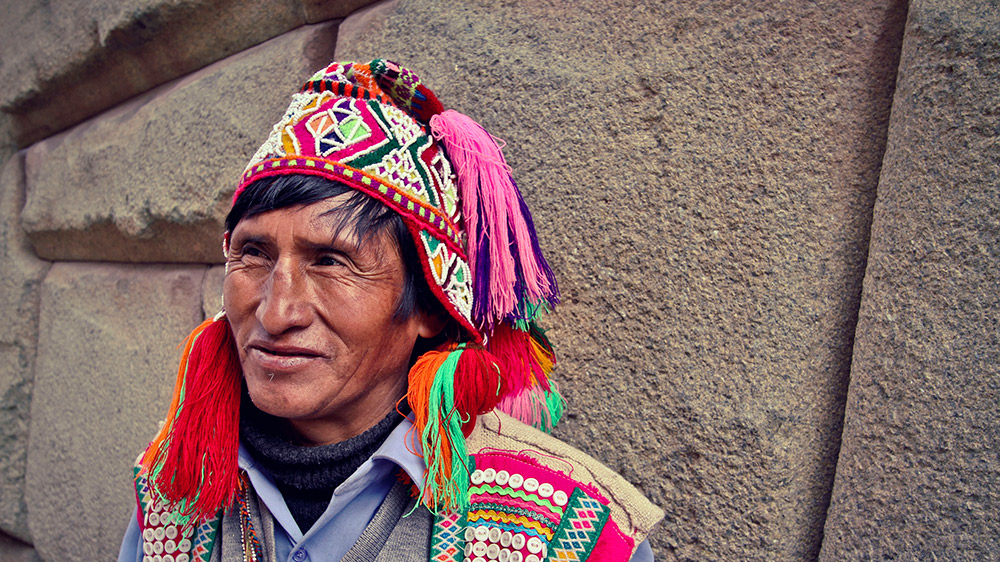The Incas — also known as the Tawantinsuyu (the Four Regions) — were a pastoral tribe in the Cusco area whose beginning dates to the 12th century. The Incan Empire spread the farthest of any civilizations in pre-Columbian America, stretching from Colombia all the way down to Chile. The centre of this vast civilization was Cusco, located high in the Andes mountains of Peru. A complex and rich culture, today there are many impressive archaeological sites across Peru and South America that showcase the Incas’ advanced and once thriving civilization. In Peru, there are a number of key sites that provide travellers with the opportunity to learn about the Incan empire and its people.

There are many impressive archaeological sites across Peru.
1. Pachacámac
Originally named after a pre-Incan god, Pachacámac — who was the creator of life and the universe — this site has been continuously inhabited and used for thousands of years. An important pre-Incan ceremonial ground, Pachacámac later became an important administrative and religious centre. After the Incans conquered the area in 1440AD–1553AD, they added to and expanded the already impressively large complex. Building many religious and ceremonial edifices, they added temples to the sun god, and adobe structures. This site has some of the best preserved pre-Incan and Incan buildings in Peru, as well as spectacular views of the surrounding countryside and coastline. Located near the coast, just outside Lima, it is easily accessed as a day trip from Peru’s capital.

Pachacámac's got an impressively large complex. Leave time to explore it fully.
2. Ollantaytambo
Situated high in the Andes mountains, Ollantaytambo is one of the few towns in Peru to still have its original Incan walls and street grid. This small mountain town is an imposing mix of large stone walls, stone terraces, and communal courtyards. Locals walk on the same streets today as their Incan ancestors did thousands of years ago. With its ancient roots and sweeping views of the jagged Andes peaks, Ollantaytambo is a unique place to explore. On the train route from Cusco to Machu Picchu, it is an easy Incan site to visit.

Take the path up and around the stone terraces for amazing views of Ollantaytambo. Photo courtesy Thibault H.
3. Cusco and the Koricancha
Cusco, meaning “navel of the world,” was once the heart of the Incan Empire. A thriving capital, as well as holy city, from the 13th–16th centuries, Peruvian legend states that Cusco was built by Sapa Inca Pachacuti, who brought the Incans from being a small society into the vast empire of the Tawantinsuyu. How the Incans constructed the architecturally complex city of Cusco still remains a mystery to archaeologists and historians. Strategically situated in the Urubamba Valley in the Andes mountain range, Cusco was built around four main highways that led to the four quarters of the Incan Empire. The city was further divided into two main sectors — hurin and hanan. Most of Incan Cusco was destroyed during the Spanish conquest, though some of the original walls, streets, and pieces of buildings still remain. The holiest site in ancient Cusco was the Koricancha (Sun Temple), which was covered in gold. Converted into a Spanish monastery, much of the original temple remains intact. Close to other famous Incan sites, such as Machu Picchu and Ollantaytambo, Cusco is a good home base for learning about the Incan culture and empire.

Start walking around central Cusco and it won't long until you see original Inca stones.
4. Choquequirao
Choquequirao, termed “cradle of gold” in Quechua, is considered the sister city of Machu Picchu. Larger than Peru’s most famous Incan site, Choquequirao is visited by fewer tourists providing travellers a chance to quietly enjoy the spectacular site without the crush of people that its more famous sister city tends to attract. Built around the same time as Machu Picchu, only 30 percent of the city has been excavated by archaeologists. Choquequirao served as a social, economic, political, and religious centre. Its design is similar to the imperial capital, and included all strata of the population — from wealthy administrators and political officials, to artisans, religious individuals, and farmers. Well preserved and built with impeccable attention to detail, Choquequirao is well worth the 5+ day trek to reach it.

Choquequirao is Machu Picchu's sister city. Photo courtesy Mark R.
5. Inca Trail and Machu Picchu
No exploration of Incan culture is complete without a visit to Machu Picchu, the most famous ancient Incan site and one of the most impressive ancient building projects in South America. Built in the 15th century at the height of the Incan empire, the city was constructed on a sharp ridge of the Andes mountains. Mistakenly called the “Lost City of the Incas” (it was always known to locals in Peru, though went undiscovered during the Spanish invasion), the city was built as an estate for the Incan king Pachacuti. Constructed in the classical Incan style, it has three main sections of the complex: Inti Watana, the Temple of the Sun, and the Room of Three Windows. Surrounded by soaring peaks, thick, encroaching jungle, and swirling mist that hugs the twisting mountains ridges, Machu Picchu is an imposing location to explore. It lives up to its reputation as one of the best-preserved and most interesting Inca sites in Peru.

No list would be complete without infamous ruins of Machu Picchu.
Getting There
G Adventures runs a number of departures in Peru encompassing a wide range of departure dates and activities to cater to different tastes. We’re thrilled at the prospect of showing you this big blue planet of ours — check out our small group trips here.























